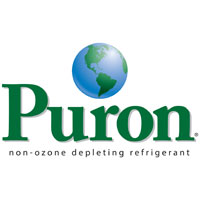In today’s world, almost everything seems oversized. We go to Starbucks and buy a venti coffee instead of a tall one because we assume we’ll need the extra caffeine. We buy two new titles in our favorite series instead of one because we don’t know if we’ll find both in the same bookstore again.
HVAC systems are not much different. People inadvertently buy oversized HVAC systems all the time out of a belief that bigger is better. Yet knowing the system size you actually need and calculating its loads correctly could save you money, time, and energy.
What Is A J Load Calculation?
If you’re researching HVAC systems, you’ve probably already heard the phrase “J load calculation.” You know it’s important, but what exactly is it? J load calculations refer to Manual J. This is actually not a manual, but a product. The Air Conditioning Contractors of America (ACCA) use it to size HVAC systems for individual homes. Manual J helps determine how much cooling your home needs, which determines how much energy will be used in the process.
Why You Need A Load Calculation
In the same way you exhibit symptoms when you get a cold, your house will exhibit “symptoms” when you use an oversized HVAC system. One key symptom is an increase in repairs. An oversized HVAC system takes more energy to run, so it will naturally experience more wear and tear than a properly sized system would. Over time, you’ll find yourself spending increasing amounts of money on repairs. Eventually, you may need to replace the entire system even if replacement seems premature.
Additionally, your home’s temperature is a good indicator your HVAC system is too big. Oversized HVAC systems can’t dehumidify the air properly. As a result, your house may feel cold and clammy or unusually stuffy. Worse, humid air increases your chances of allergy and asthma attacks, respiratory illnesses, and exposure to contaminants like mold. If your house feels uncomfortable or you have respiratory symptoms, it may be time to downsize.
Finally, running an HVAC system without load calculations can negatively impact energy efficiency. Some large HVAC systems “kick” on and off arbitrarily, leaving your home insufficiently warm or cool. To compensate, you must constantly adjust the HVAC machines and your thermostat. This wastes electricity and fuel and can contribute to air pollution. In contrast, smaller HVAC systems naturally use less air. Your home heats or cools faster and more thoroughly, and your system doesn’t have to work as hard to use leftover or “wasted” air.
How To Correctly Size Your HVAC System
Professionals should calculate J load for you; do not try to do so yourself. To properly calculate J load, professionals like the ones at McMaster Air will consider how much square footage you have, your insulation levels, and which surfaces gain or lose heat in your house, among other factors.
Even homes that need plenty of cooling often use HVAC systems 2, 3, or 4 times too big. If you are not sure how big your system should be, it’s best to contact McMaster Air and get an exact calculation. To get your calculation or discuss your cooling needs further, please contact us immediately. It’s our mission to ensure your HVAC system keeps your home comfortable, but also uses only the energy it needs.













